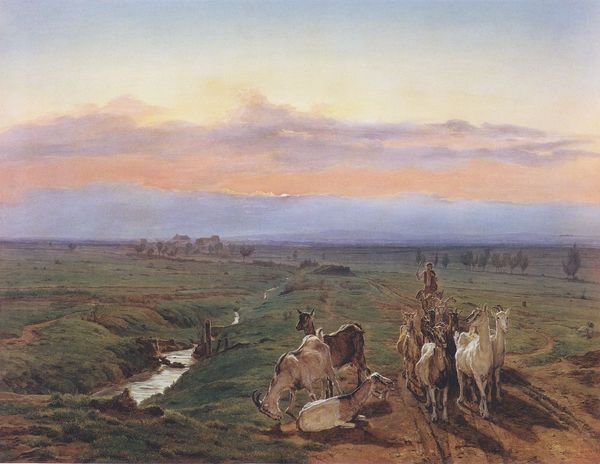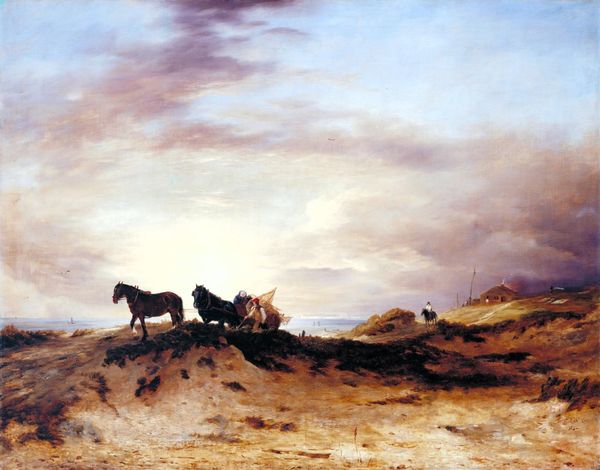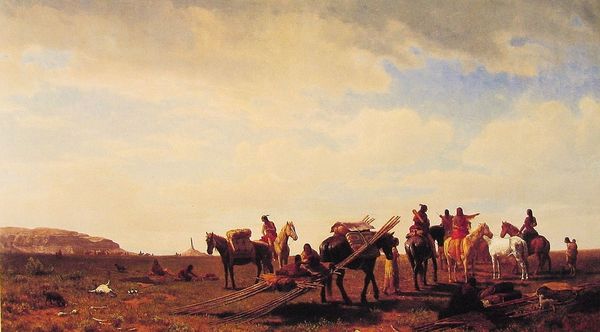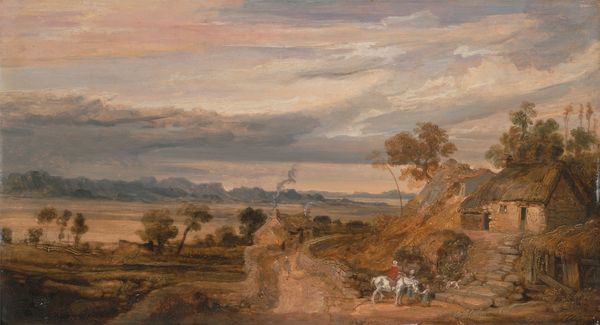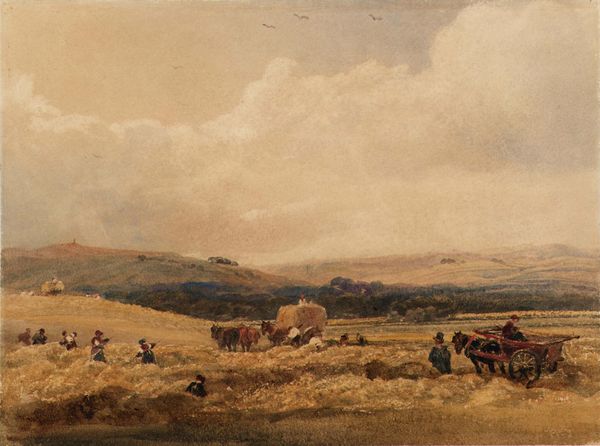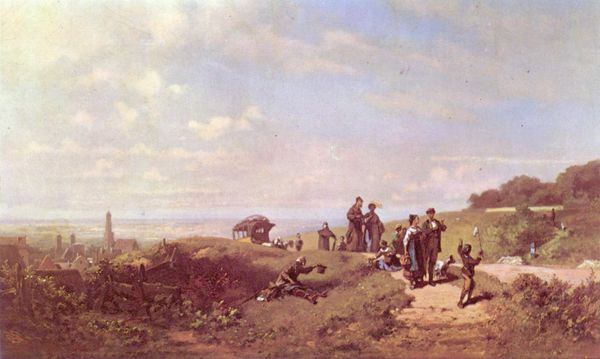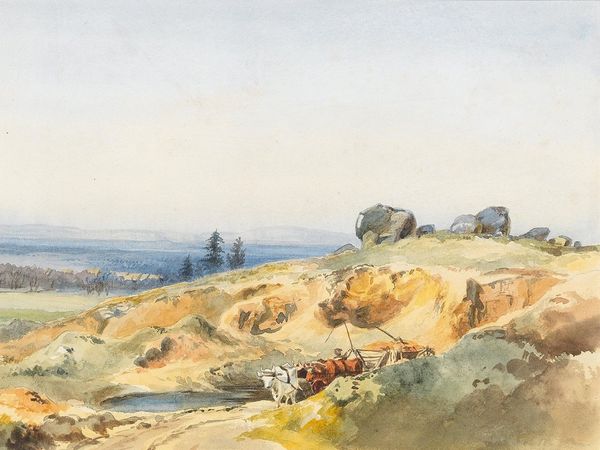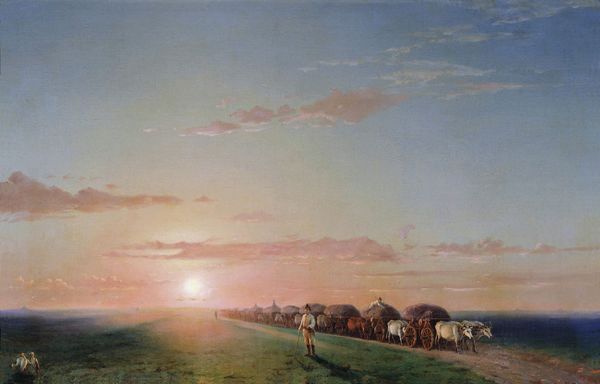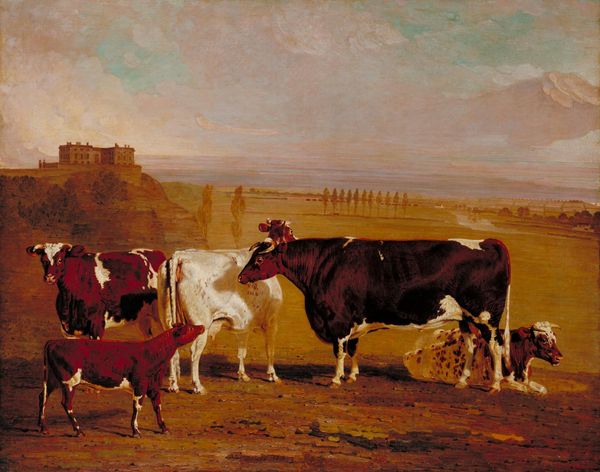
painting, plein-air, watercolor
#
tree
#
sky
#
painting
#
countryside
#
plein-air
#
landscape
#
impressionist landscape
#
oil painting
#
watercolor
#
romanticism
#
genre-painting
#
realism
Copyright: Public domain
Editor: This is David Cox’s "Cornfield," made with watercolor around 1814. It evokes such a serene, pastoral feeling. There’s a sense of community, yet the open landscape speaks of something larger. How do you interpret this work, especially considering its cultural context? Curator: Notice how Cox places the figures within this vast expanse, yes? To me, that's an intentional gesture. Consider, at that time, the Industrial Revolution was beginning to overshadow rural life. Could these figures represent a yearning for simpler times, a visual echo of agrarian values facing transformation? Editor: That's interesting, I didn't consider that! It's almost like the people become symbols *of* the countryside. Does the technique add to that meaning? Curator: Absolutely! Watercolor allows for fluidity and transparency. See how the light seems to permeate everything, softening edges, almost like memory. It's not just a scene; it’s imbued with feeling. It prompts, what does the vastness of the landscape *mean* alongside this quiet human presence? Are we looking at nostalgia? A warning? Or simply, beauty found in the everyday? Editor: So, the visual symbols invite multiple interpretations related to longing and transformation...it makes you think. Curator: Indeed! Cox uses the land itself as a powerful signifier. The cornfield is not just a field; it symbolizes sustenance, tradition, and connection to the earth – all powerful concepts undergoing shifts at that time. What will it signify for us looking back from *our* time? Editor: I will never see a landscape the same way again. Thank you! Curator: It is in this endless layering of meanings that art endures and evolves.
Comments
No comments
Be the first to comment and join the conversation on the ultimate creative platform.
